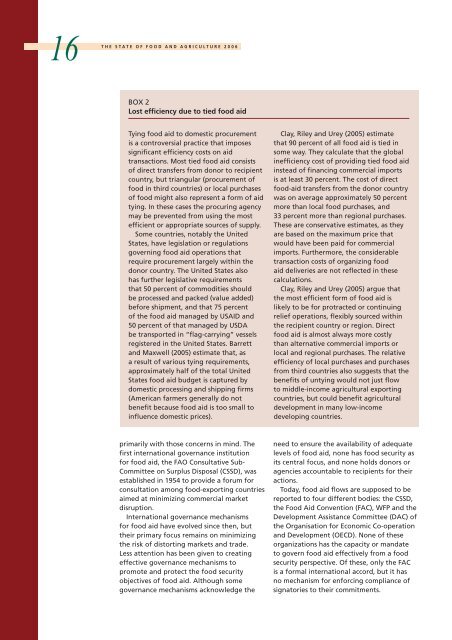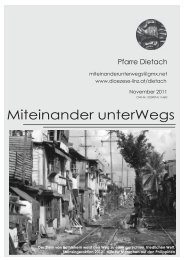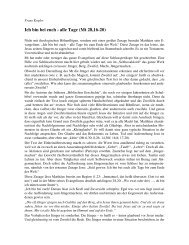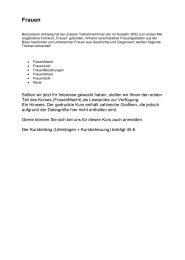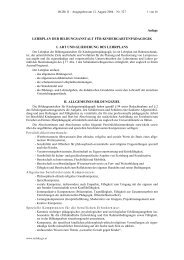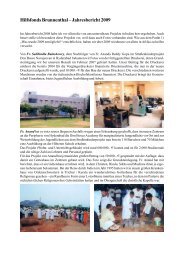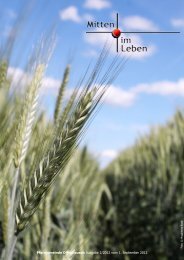The State of Food and Agriculture - FAO
The State of Food and Agriculture - FAO
The State of Food and Agriculture - FAO
Create successful ePaper yourself
Turn your PDF publications into a flip-book with our unique Google optimized e-Paper software.
16<br />
THE STATE OF FOOD AND AGRICULTURE 2006<br />
BOX 2<br />
Lost efficiency due to tied food aid<br />
Tying food aid to domestic procurement<br />
is a controversial practice that imposes<br />
significant efficiency costs on aid<br />
transactions. Most tied food aid consists<br />
<strong>of</strong> direct transfers from donor to recipient<br />
country, but triangular (procurement <strong>of</strong><br />
food in third countries) or local purchases<br />
<strong>of</strong> food might also represent a form <strong>of</strong> aid<br />
tying. In these cases the procuring agency<br />
may be prevented from using the most<br />
efficient or appropriate sources <strong>of</strong> supply.<br />
Some countries, notably the United<br />
<strong>State</strong>s, have legislation or regulations<br />
governing food aid operations that<br />
require procurement largely within the<br />
donor country. <strong>The</strong> United <strong>State</strong>s also<br />
has further legislative requirements<br />
that 50 percent <strong>of</strong> commodities should<br />
be processed <strong>and</strong> packed (value added)<br />
before shipment, <strong>and</strong> that 75 percent<br />
<strong>of</strong> the food aid managed by USAID <strong>and</strong><br />
50 percent <strong>of</strong> that managed by USDA<br />
be transported in “flag-carrying” vessels<br />
registered in the United <strong>State</strong>s. Barrett<br />
<strong>and</strong> Maxwell (2005) estimate that, as<br />
a result <strong>of</strong> various tying requirements,<br />
approximately half <strong>of</strong> the total United<br />
<strong>State</strong>s food aid budget is captured by<br />
domestic processing <strong>and</strong> shipping firms<br />
(American farmers generally do not<br />
benefit because food aid is too small to<br />
influence domestic prices).<br />
primarily with those concerns in mind. <strong>The</strong><br />
first international governance institution<br />
for food aid, the <strong>FAO</strong> Consultative Sub-<br />
Committee on Surplus Disposal (CSSD), was<br />
established in 1954 to provide a forum for<br />
consultation among food-exporting countries<br />
aimed at minimizing commercial market<br />
disruption.<br />
International governance mechanisms<br />
for food aid have evolved since then, but<br />
their primary focus remains on minimizing<br />
the risk <strong>of</strong> distorting markets <strong>and</strong> trade.<br />
Less attention has been given to creating<br />
effective governance mechanisms to<br />
promote <strong>and</strong> protect the food security<br />
objectives <strong>of</strong> food aid. Although some<br />
governance mechanisms acknowledge the<br />
Clay, Riley <strong>and</strong> Urey (2005) estimate<br />
that 90 percent <strong>of</strong> all food aid is tied in<br />
some way. <strong>The</strong>y calculate that the global<br />
inefficiency cost <strong>of</strong> providing tied food aid<br />
instead <strong>of</strong> financing commercial imports<br />
is at least 30 percent. <strong>The</strong> cost <strong>of</strong> direct<br />
food-aid transfers from the donor country<br />
was on average approximately 50 percent<br />
more than local food purchases, <strong>and</strong><br />
33 percent more than regional purchases.<br />
<strong>The</strong>se are conservative estimates, as they<br />
are based on the maximum price that<br />
would have been paid for commercial<br />
imports. Furthermore, the considerable<br />
transaction costs <strong>of</strong> organizing food<br />
aid deliveries are not reflected in these<br />
calculations.<br />
Clay, Riley <strong>and</strong> Urey (2005) argue that<br />
the most efficient form <strong>of</strong> food aid is<br />
likely to be for protracted or continuing<br />
relief operations, flexibly sourced within<br />
the recipient country or region. Direct<br />
food aid is almost always more costly<br />
than alternative commercial imports or<br />
local <strong>and</strong> regional purchases. <strong>The</strong> relative<br />
efficiency <strong>of</strong> local purchases <strong>and</strong> purchases<br />
from third countries also suggests that the<br />
benefits <strong>of</strong> untying would not just flow<br />
to middle-income agricultural exporting<br />
countries, but could benefit agricultural<br />
development in many low-income<br />
developing countries.<br />
need to ensure the availability <strong>of</strong> adequate<br />
levels <strong>of</strong> food aid, none has food security as<br />
its central focus, <strong>and</strong> none holds donors or<br />
agencies accountable to recipients for their<br />
actions.<br />
Today, food aid flows are supposed to be<br />
reported to four different bodies: the CSSD,<br />
the <strong>Food</strong> Aid Convention (FAC), WFP <strong>and</strong> the<br />
Development Assistance Committee (DAC) <strong>of</strong><br />
the Organisation for Economic Co-operation<br />
<strong>and</strong> Development (OECD). None <strong>of</strong> these<br />
organizations has the capacity or m<strong>and</strong>ate<br />
to govern food aid effectively from a food<br />
security perspective. Of these, only the FAC<br />
is a formal international accord, but it has<br />
no mechanism for enforcing compliance <strong>of</strong><br />
signatories to their commitments.


